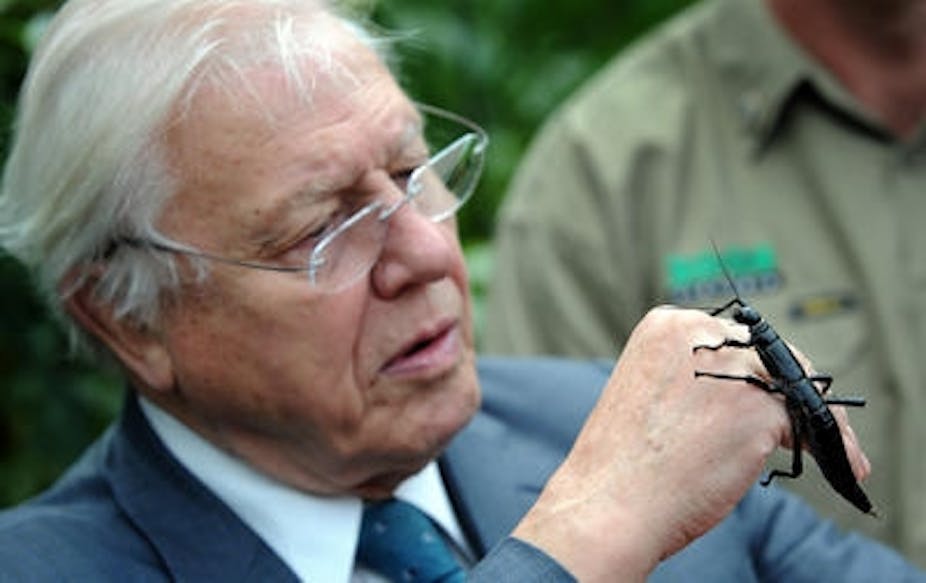In Australia, the “cute and cuddlies” receive the vast amount of publicity and conservation management dollars. Little is left for the small, scaly and slimy species that many consider just plain creepy. But not only do we need invertebrates for our own survival; they’re also great bang for our conservation buck.
Australia has about 300,000 terrestrial invertebrate species. The country has lost 8% of its native mammal fauna (23 species) since the arrival of Europeans. If we have lost a similar percentage of invertebrates, then 24,000 species could be extinct already.
The problem however, isn’t simply a lack of funding. It is more fundamental. It is recognising which species require funding.
We don’t know who they are
Mammals, along with birds, reptiles and amphibians, are an extremely small percentage of all biodiversity (~0.4%). Invertebrates on the other hand, make up the vast majority of biodiversity (~80%) but feature such unloved creatures as leeches, parasitic worms, spiders, snails, lice and aphids.
The most insidious threat to Australia’s invertebrates is that we haven’t documented their diversity. For most invertebrate groups, we don’t know what species are out there and therefore struggle to identify those that are threatened.
The Numbat worm, Dinosaur ant, Leckie’s crayfish and Eula’s planthopper are among the extensive list of invertebrates banished to obscurity and potentially sentenced to extinction, deemed too ugly or insignificant to protect.
Never heard of any of these? Well you should have. Did you know the Dinosaur ant is considered the most prehistoric ant alive today? Or that Eula’s planthopper bug is the only species of its family (Flatidae) that lives underground with ants?
But invertebrates are gross: do we really need them?
The specific consequences of neglecting invertebrates in land management are largely unknown. But these creatures perform key functions within ecosystems, from pollination to controlling population explosions of other species of plant and animal.
Invertebrates recycle waste; without dung beetles for example, we would be hip-deep in manure. Pollination by insects helps plants cross-pollinate and produce viable seeds, resulting in fruit, grains (such as wheat and canola) and honey. Without invertebrate pollination we would lose countless species of plants including the majority of orchids.
Parasites have recently been found to decrease the prevalence of some diseases and maintain the genetic diversity of their hosts. Invertebrates provide a vast food supply for the survival of other invertebrates (spiders, scorpions, tiger beetles), vertebrates (lizards, frogs, birds, bats, fish, insectivorous mammals) and some plants (carnivorous plants). There has even been talk of edible insects being introduced to the western diet for their health and environmental benefits.
How do we treat vulnerable invertebrates?
Differences in assessments between state, federal and international bodies for single species highlight the inconsistency in the framework and further complicate equitable funding.
Not a single non-butterfly invertebrate is present on Queensland’s list. In South Australia, invertebrates are denied nomination altogether, regardless of whether they are an attractive butterfly or a parasitic worm. This is because South Australia classified “animals” as mammals, birds, reptiles and amphibians under the state legislation.
For example, the Dinosaur ant does not qualify for state listing because it lives in South Australia. The ant was also deemed ineligible for listing by the federal government due to a lack of evidence of a decline, despite its likely extinction in Western Australia. In contrast, the International Union for the Conservation of Nature (IUCN), the international standard, deemed the ant critically endangered; the highest level of threat.
More bang for your conservation buck
The expense of conservation actions for Australia’s “cute and cuddlies” exceeds the cost required for invertebrates. Bilby resettlement programs are estimated to cost $330,400 per year, while surveys of wild populations cost about $73,000 per year.
What about the cost to monitor or move the rare parasites with their host plant and animals? You would need a specialist to identify species, a technician to collect parasites by visual searches or droppings, and a modeler to determine minimal viable host numbers; all together, the cost may be less than a tenth of the conservation costs of their hosts.
There are several preliminary steps needed to ensure recognition and equitable funding:
Biogeography: surveys must be done to determine rarity and whether any threatening processes are evident.
Taxonomy: an invertebrate can be listed without a species name but a taxonomist must certify that it is a distinct species.
Nomination: getting a species listed requires detailed background knowledge on the species, including successful and unsuccessful survey locations.
Management: the cost of different management strategies will vary greatly depending on the animal involved. Some species may just need their habitat maintained without pollution or invasion by exotic diseases and species. Other threats, such as climate change, are more difficult to manage.
These measures will raise the profile of invertebrates and allow for effective targeted conservation.
Kangaroos, koalas and bilbies may be our most charismatic animals, but charisma does not equal environmental importance and shouldn’t justify funding priority. If we are to ensure the future sustainability and balance of earth, legislation has to support the protection of all organisms who contribute to the environmental harmony of the planet. Australia’s invertebrates have certainly earned this recognition.
As the famous entomologist EO Wilson notes, invertebrates are “the little creatures that run the world”; without them, all life “would mostly disappear … within a few months”.

